Innovation Lab: Challenge 1 Part 3
Bed Phone Stand Prototype
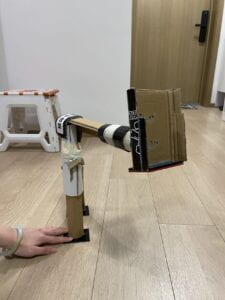
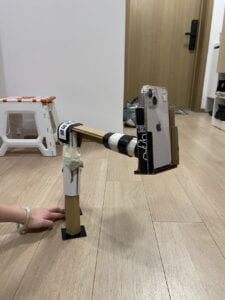
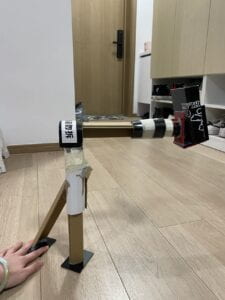
For the basic 3D physical model of an unnecessary invention, I decided to focus on the bed phone stand. The materials I used include cardboard, tape, glue (hot glue gun), and plastic scraps from my previous projects in other courses. The final product did end up shifting from my original design as cardboard is not as sturdy as other materials, and holding up an actual phone causes quite a bit of strain.
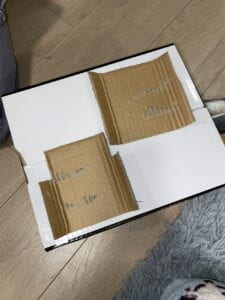
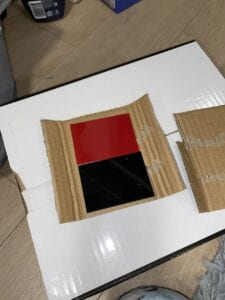
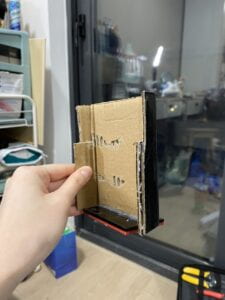
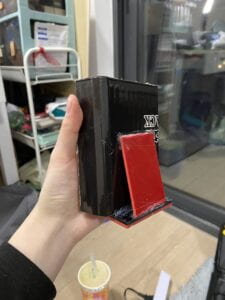
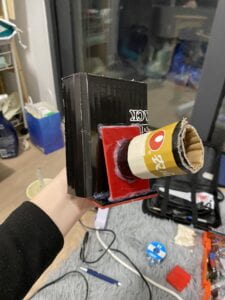
To start off, I made the main part that holds the phone. I used two same sized pieces of cardboard, cutting out edges for the piece touching the actual phone to avoid any buttons being pressed. I made this according to the design of iPhones. To make it more sturdy and capable of handling the weight of the phone, I glued a rectangular piece of plastic in between the two pieces, and then glued everything together. To hold the phone in place, I glued two plastic rectangles together and then glued it onto the bottom of the phone holder. For even more support, another rectangle was glued behind the phone at a slanted angle. To this back piece, I glued a cardboard cylinder which will connect to the rest of the phone stand.
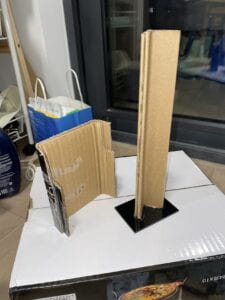
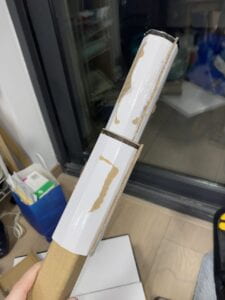
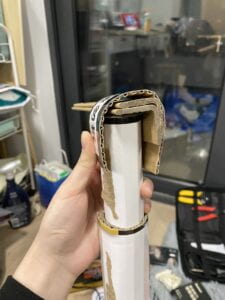
For the stand itself, I used a long sturdy cardboard stick (bent at 90 degrees) I had lying around, and I cut two identical length pieces for the base, glued it together, and then instead of using a clip (I did not have one sturdy enough), I just glued the base stand onto a rectangular plastic piece. To replace the rotating ball in my initial design, I substituted it with cylindrical cardboard pieces, one lying on top of the base stick, and the other slightly smaller to fit directly inside the piece lying on top of the base stick. This mechanism allows for the height of the stand to be altered. To the smaller cylindrical cardboard, I glued on a shorter stick (2 stack) exactly like the one I used for the base, except this one was protruding sideways, and to counter the odd angle it was at, I added a smaller and longer piece of cardboard on top to secure it. This was only glued to the top cylinder to allow for height modification of the phone stand.
To connect the phone holder to the stand, I utilized the same mechanism of two cardboard cylinders sitting at the end of the sideways stick. As I mentioned earlier, the smaller cylindrical cardboard piece was already glued onto the phone holder, which allows for the phone holder to easily connect and be adjustable at the same time. However, to secure the weight of the phone, I decided to glue the first cylinder directly onto the sideways stick, which overall limits the length modification, but makes it sturdier.
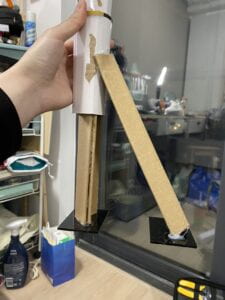
At this point, the phone stand was no longer capable of standing on its own, so I countered this by adding another base stand stick at an angle to support the weight. This unfortunately did not work out. I tried to add another angled stick in the front to balance the weight of the phone, but I miscalculated the angle and the stick did not function properly, so I had to cut it off. The stick also got damaged from this and I had no more to work with. As a result, the phone stand does not hold up on its own because of the immense weight from the phone and uneven distribution with the base, but if held down with heavy objects at the base of the sticks, it will work properly. I tried various objects to add onto the base, but due to the limited space where it could be held down, I found that it was best to just hold it down with a hand. Overall, I believe that this design is quite good, but cardboard itself is not a sturdy enough material to withstand the weight of the phone, so remaking this exact design with better materials will show more promising results.
